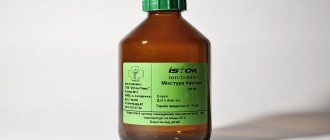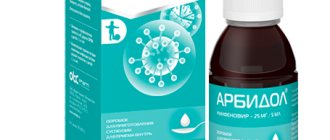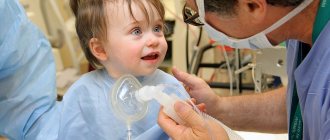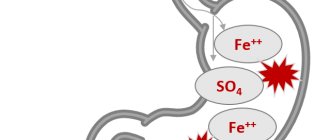Antibiotics of the macrolide group are extremely often prescribed in therapeutic practice. This is quite justified - in the modern world, with such a variety of antibacterial drugs, preference should be given to those that have a minimum of side effects undesirable for the patient, and macrolide antibiotics are usually well tolerated by patients.
In order to improve the safety profile, antibiotics of the macrolide group with an additional prebiotic component were developed - Ecoantibiotics. These drugs have an additional beneficial effect on the state of the intestinal microflora, thereby improving the tolerability of antibacterial therapy. The group of macrolides includes ecoantibiotics Ecomed (azithromycin) and Ecositrin (clarithromycin).
Antibiotics from the macrolide group
Macrolides are drugs, antibiotics, the chemical composition of which is complex: to be more precise, these are solid substances similar in their properties to lactones; their structure contains a macrocyclic lactone ring
Depending on the number of carbon atoms in the ring, macrolides are divided into 14-membered ones, which include erythromycin, roxithromine and clarithromycin; 15-membered - azithromycin and 16-membered - midecamycin, spiramycin, josamycin.
The main purpose of macrolides is activity against intracellular pathogens, such as chlamydia, mycoplasma, legionella and campylobacter; macrolides also show activity against gram-positive cocci (streptococci and staphylococci).
Spectrum of activity of macrolide antibiotics
Macrolides are broad-spectrum antibiotics. They show high activity against gram-positive cocci (S.pyogenes, S.pneumoniae, S.aureus), only MRSA is not included in this group. Also, macrolide antibiotics are used to eradicate the pathogens of whooping cough and diphtheria, Legionella, Moraxella, Campylobacter and Listeria. Macrolides are often indispensable for diseases caused by spirochetes, ureaplasmas, chlamydia and mycoplasmas. The use of macrolides is also effective for anaerobic infections (except for cases of infection with B.fragilis).
It is important to note that azithromycin (belonging to semi-synthetic drugs) has a stronger effect on Pseudomonas aeruginosa than others in the group of macrolides. In turn, clarithromycin is superior to other drugs in its effect on Helicobacter pylori and atypical mycobacteria.
Some macrolide antibiotics (azithromycin, spiramycin and roxithromycin) are active against protozoa such as Toxoplasma gondii and Cryptosporidium spp..
It is important to remember that a number of microorganisms are not sensitive to macrolide antibiotics. These include bacteria of the Enterobacteriaceae, Pseudomonas and Acinetobacter families.
Pharmacokinetics of macrolides
Macrolides, after oral administration, behave differently: it all depends on the type of drug and the presence of food at the time of taking the antibiotic, which can reduce the bioavailability of, for example, erythromycin, and to a lesser extent affect the absorption of antibiotics such as azithromycin and roxithromycin. At the same time, among macrolides there are antibiotics whose pharmacokinetics are not related to food intake - clarithromycin, spiramycin and josamycin.
Plasma protein binding among macrolides also varies. The highest concentrations of the antibiotic in the blood serum are observed after taking roxithromycin, since more than 90% of the drug is bound to blood proteins. For spiramycin this figure is minimal - 20%.
The distribution of macrolide antibiotics in the body occurs by creating high concentrations in the tissues of the body. These drugs are able to accumulate at the site of inflammation and quickly suppress the infection. In this case, the most active macrolides should be considered azithromycin and clarithromycin, which are capable of suppressing inflammation in the early stages, even long-term, since they create high tissue concentrations of the active substance. At the same time, it should be noted that drugs from the macrolide group have a positive effect on inflammatory factors, ensuring their direct anti-inflammatory effect of these antibiotics.
An important advantage of macrolide antibiotics is their ability to penetrate the cell wall, which ensures their activity against intracellular pathogens, which is especially important in the treatment of infections caused by atypical pathogens and STDs.
The process of macrolide metabolism occurs, in turn, mainly through the liver with the participation of cytochrome P-450. Metabolites are excreted mostly through bile; 5 to 10 percent is excreted through the kidneys; T1/2 varies for different molecules and ranges from 1 hour for medicamicin to 55 hours for azithromycin. In liver cirrhosis, the half-life of drugs such as erythromycin and josamycin can significantly increase; the prescription of these macrolides for this pathology requires special precautions. However, renal failure has virtually no effect on the half-life of macrolide antibiotics. The only exceptions are clarithromycin and roxithromycin.
Antibiotics of the macrolide group are practically unable to overcome the blood-brain and blood-ophthalmic barriers. The hematoplacental barrier is passable for macrolides, and they are also able to penetrate into breast milk, which imposes some restrictions on their use during pregnancy and breastfeeding, despite the lack of a teratogenic effect.
Duration of use of antibacterial agents
Parents often ask questions: “How many days are antibiotics given to children? What is the best antibiotic for children? What should I give my child when taking antibiotics? In most cases, 5-7 days of use are sufficient. There are exceptions in which the duration of use may increase to 10–28 days. The second question cannot be answered unambiguously. Each drug has its own indications and contraindications, so the use of a particular drug depends on the situation (age, diagnosis, concomitant pathology, etc.). To the third question, many doctors will answer the same: “Probiotics.” A probiotic will restore normal intestinal microflora that has been affected by an antibacterial agent. As a rule, they are prescribed in a course of 2 weeks to 1 month.
You can always consult your doctor if you have any questions regarding treatment.
According to the Eurasian recommendations, in order to overcome antibiotic resistance, experts emphasize the need to draw the attention of patients to strict adherence to the drug use regimen. It is necessary to use optimal dosage forms of antibiotics with high bioavailability, in particular, Solutab dispersible tablets, which is consistent with the current position of WHO and UNICEF. Advantages of Solutab dispersible tablets:
- Completely absorbed in the intestines. As a result, the effect is equal to the intravenous effect.
- Create a high concentration at the site of infection.
- Better portability.
- Good organoleptic properties.
- The ability to dissolve tablets, which allows the use of this dosage form in children.
- A minimal amount of liquid is required for swallowing.
- They have an advantage over a suspension - errors in preparation are eliminated.
Dispersible tablets recommended by WHO and UNICEF:
- Flemoxin Solutab
- Flemoklav Solutab
- Suprax Solutab
- Vilprofen Solutab
- Unidox Solutab
Parents of children should remember that an incomplete course of prescribed antibiotic treatment leads to the formation of bacterial resistance and a prolonged presence of the microbe in the body.
Adverse reactions of macrolide antibiotics
Unlike other classes of antimicrobial drugs, adverse reactions during the period of taking antibiotics belonging to the macrolide group are quite rare. These drugs are generally easily tolerated by patients, including children, pregnant women and the elderly.
Below is a list of possible reactions during a course of antibacterial therapy with drugs from the macrolide group:
- From the gastrointestinal tract: abdominal discomfort, pain, nausea, vomiting, diarrhea, which can be caused by erythromycin, as it can have a prokinetic effect, stimulating intestinal motility. Less commonly, similar phenomena are observed when spiramycin and josamycin are prescribed.
- Adverse events from the liver are most typical for erythromycin. According to research, liver damage during macrolide therapy is 3.6 cases per 100 thousand, so in general, the course of antibacterial therapy is considered favorable. General malaise, weakness, abdominal pain, rarely fever, signs of jaundice are a consequence of cholestatic hepatitis. In this case, ALT and AST are observed. It is important to note that the risk of developing hepatotoxic reactions most often occurs due to the interaction of macrolides with other drugs; a very important indicator in this case is the presence of liver diseases.
- From the central nervous system, dizziness, headache, and very rarely hearing loss (with intravenous administration of macrolides in extremely high doses) are possible.
- From the cardiovascular system, changes may appear on the ECG - prolongation of the QT interval.
- Local reactions caused by intravenous use of macrolide antibiotics include the following: phlebitis and thrombophlebitis. It is important to take into account here that these drugs can only be administered dropwise; jet administration is contraindicated.
Allergic reactions, skin rash, and urticaria are not typical for macrolides and occur in very rare cases.
Complications of antibiotic use
When using antibiotics, there is a risk of developing unwanted reactions. Such complications include:
- Hepatotoxicity – liver damage. Most often observed when taking moxifloxacin, macrolides, and clavulanate.
- Cardiotoxicity is damage to the heart. Such a reaction can occur when using fluoroquinolones, azithromycin, clarithromycin.
- Neurotoxicity is damage to the nervous system. Occurs with fluoroquinolones.
- Allergy . Characteristic of penicillins and cephalosporins.
In fact, the wider the spectrum of antimicrobial activity, the higher the risk of adverse reactions..
Indications for prescribing macrolide antibiotics
A course of antibacterial therapy with macrolide drugs is prescribed to patients with various infectious diseases:
- For upper respiratory tract infections: acute sinusitis, streptococcal tonsillitis, acute otitis media in children (the highest activity is observed with azithromycin, which is also prescribed for allergic reactions to penicillin). Separately, we should dwell on such a disease as streptococcal tonsillopharyngitis - drugs of the macrolide group in this case act as an alternative to penicillin, not being inferior to it in the effectiveness of suppressing the source of inflammation, so they can be prescribed to patients to prevent serious complications of tonsillopharyngitis (rheumatism and glomerulonephritis).
- For lower respiratory tract infections: chronic bronchitis in the acute stage, community-acquired pneumonia, including those caused by atypical pathogens.
- For “childhood infections”: whooping cough and diphtheria. In the latter case, erythromycin is prescribed, which is combined with anti-diphtheria serum.
- For infectious diseases of the skin and soft tissues: furunculosis, moderate and severe forms of skin acne (erythromycin or azithromycin is used), etc.
- For sexually transmitted infections, both in women and men: syphilis, chlamydia, ureaplasmosis, mycoplasmosis, chancroid, lymphogranuloma venereum.
- For infections of the oral cavity that affect the tissues surrounding the roots of the teeth - periodontitis, periostitis.
- Erythromycin is indicated for the treatment of campylobacter gastroenteritis, manifested by diarrhea, nausea, fever and abdominal pain.
- In the treatment of gastric and duodenal ulcers for the eradication of Helicobacter pylori, the administration of clarithromycin as part of a three- or four-component regimen is indicated.
- In the treatment of parasitic diseases of humans and animals: spiramycin, a natural antibiotic of the macrolide group, is most often used for the treatment of toxoplasmosis. For cryptosporidiosis, preference is given to spiramycin and roxithromycin.
- For the prevention and treatment of diseases such as mycobacteriosis caused by mycobacteria M.avium in patients with acquired immunodeficiency syndrome. The most effective drugs in this case should be clarithromycin and azithromycin.
- For the purpose of prophylactic use, drugs from the macrolide group are prescribed:
- people who have had contact with patients with whooping cough are prescribed erythromycin;
- for patients suffering from rheumatism who have an allergic reaction to penicillin, erythromycin is recommended as an alternative;
- for meningococcal carriage, spiramycin is recommended;
- in dentistry - azithromycin and clarithromycin;
- When performing intestinal decontamination in patients who are being prepared for colon surgery, erythromycin is prescribed in combination with kanamycin.
Choosing an antibiotic in a child
Previously, we reviewed the main diseases of the upper and lower respiratory tract, for which antimicrobial agents can be used. Now we will analyze the main drugs that can be used for this or that pathology, and also indicate the required dosage of the drug.
Do not take antibiotics without a doctor's prescription.
Do not use medications yourself! The medications and dosages listed below are for informational purposes only and are not equivalent to treatments prescribed by a physician.
Acute otitis media
The drug of choice is amoxicillin 40-90 mg/kg/day in 3 divided doses. Duration of therapy is 10 days in children <5 years old, 5-7 days in children >5 years old. The second-line drug is amoxicillin/clavulanate. The third-line drug is josamycin.
Acute rhinosinusitis
Similar to the use of antibacterial agents for acute otitis media.
Acute tonsillitis
The drug of choice is amoxicillin 45-60 mg/kg in 3 doses, phenoxymethylpenicillin 25-50 mg/kg 3-4 times a day. The second-line drug is cefixime. The third-line drug is josamycin. Duration of therapy is 10 days.
Community-acquired pneumonia
The therapy of choice is amoxicillin IV 45-90 mg/kg/day in 3 divided doses. The second line drug is amoxicillin/clavulanate, cefuroxime IM, ceftriaxone IM. The third line drug is josamycin 40-50 mg/kg/day in 2 doses.
Antibiotics are indispensable drugs in the fight against bacterial infection. These medications should be prescribed solely for medical reasons. It is very important to adhere to the prescribed regimen of using the antibacterial agent. Do not self-medicate. If signs of infection occur, contact your pediatrician, who will help establish the diagnosis, cause of the disease, and prescribe adequate treatment.
Contraindications to the use of macrolides
Allergy to the corresponding drug should be considered a contraindication when prescribing macrolide antibiotics; pregnancy (this contraindication is relevant to clarithromycin, midecamycin or roxithromycin); During breastfeeding, the above antibiotics, as well as spiramycin and josamycin, are contraindicated.
Warnings
- During pregnancy, the use of clarithromycin should be avoided, as there is evidence of its negative effects on fetal development. At the moment, there is no information that could confirm the absence of negative effects of roxithromycin and midecamycin, as a result of which their use during pregnancy should be avoided.
- Macrolide antibiotics such as josamycin, spiramycin and erythromycin do not cause negative effects on the fetus. Therefore, a course of antibacterial therapy with these drugs is not contraindicated for pregnant women.
- Azithromycin can be recommended with caution during pregnancy.
- During breastfeeding, antibiotics pass into breast milk, so only erythromycin is safe for a nursing woman. These data are not available for azithromycin, and all other macrolide antibiotics are contraindicated for nursing women. During treatment with macrolides, breastfeeding should be suspended.
- For children, macrolides are prescribed from 6 months in a special children's form. For example, Ecomed (azithromycin) is available in powder form for the preparation of a suspension, which makes its use in children convenient.
- Prescribing antibacterial therapy with macrolides to older people does not pose any danger. However, when prescribing erythromycin, it is necessary to take into account its possible negative effect on hearing.
- If renal function is impaired, T1/2 of clarithromycin can be increased to 20 hours (if creatine clearance decreases to less than 30 ml/min), and the half-life of its active metabolite is extended to 40 hours.
- T1/2 of roxithromycin when creatine clearance decreases to 10 ml/min increases to 13-15 hours. In this regard, in case of renal failure, titration of the dose of these macrolide antibiotics is required.
- in case of severe liver dysfunction, treatment with antibiotics of this group should be avoided, since the elimination time of the drug increases, which can lead to an increased risk of hepatoxicity. Of particular note is the occurrence of such adverse events when using josamycin and erythromycin.
- Given the possible effect on prolongation of the QT interval, caution should be exercised when treating macrolide antibiotics in patients suffering from heart disease. An electrocardiogram allows you to see changes in the functioning of the heart.
Information for patients taking macrolide antibiotics
Instructions for the use of antibacterial drugs belonging to the group of macrolides serve as the main guideline in prescribing a course of treatment. This or that drug should be taken as prescribed by the attending physician, taking into account factors such as the presence of chronic diseases, general malaise, reduced immunity, age, pregnancy, breastfeeding and individual characteristics of the body.
The general rules for the use of macrolide antibiotics are as follows:
- Macrolides should be taken orally 1 hour before meals or 2 hours after meals. Exceptions are clarithromycin, spiramycin and josamycin; they can be taken without taking into account meal times; Erythromycin should be taken with plenty of water (at least 1 full glass);
- when preparing suspensions for children, it is recommended to follow the attached instructions;
- You cannot, without a doctor’s recommendation, change the time interval between taking antibiotics, skip or change the dosage (increase or decrease);
- if for some reason the required dose was missed, you should take it as quickly as possible, but if it is already time to take the next one, you should not do this;
- it is necessary to adhere to the prescribed course of therapy and not increase it on your own, do not stop taking the drug prematurely (this is especially important to consider in case of streptococcal infections);
- when treating with erythromycin, it is necessary to abstain from alcohol-containing drinks and medications during treatment;
- You cannot combine the use of macrolides with antacids.
Main characteristics and features of the use of various macrolides
- Erythromycin - used 2 to 4 times a day. The peculiarities of erythromycin include the fact that when taking the drug orally, it is important to take into account the presence of food - it reduces the bioavailability of the drug. With simultaneous use of erythromycin with theophylline, cisapride, carbamazepine, disopyramide and cyclosparine, an increase in the concentration of the drug in plasma may be observed. When taking erythromycin, adverse events from the gastrointestinal tract often occur. The drug can be used in pregnant and lactating women.
- Clarithromycin - recommended oral administration 2 times a day; A feature of clarithromycin should be considered its high activity against H. pylori, as well as atypical mycobacteria. Clarithromycin is characterized by higher bioavailability and tissue penetration compared to erythromycin. This macrolide is prescribed with caution for renal failure and is not recommended for use in pregnant and lactating women. In pediatric practice, clarithromycin is used from 6 months. An eco-analogue of clarithromycin is available in tablets under the trade name Ecositrin.
- Azithromycin is used once a day, as it has a very long half-life. It can accumulate in tissues in significant concentrations, which makes it possible to use azithromycin in short courses (3-5 days). Single use is possible in children with acute otitis media and in adults with acute urogenital chlamydia. Take azithromycin 1 hour before a meal or 2 hours after a meal, since it is advisable to take it on an empty stomach. Azithromycin is more active than other macrolides against Pseudomonas aeruginosa and enterobacteria. An eco-analogue of azithromycin, Ecomed, is available in capsules, tablets and powder for the preparation of a suspension (children's form).
- Roxithromycin - prescribed 1-2 times a day, regardless of meals. If the patient has renal failure, the standard therapeutic dose should be reduced. Therapy with roxithromycin is easier to tolerate than treatment with erythromycin and is less likely to interact with other drugs. This antibiotic should not be used during pregnancy and breastfeeding.
- Spiramycin - used 2-3 times a day. Women should interrupt breastfeeding while taking the drug. This macrolide antibiotic has high bioavailability regardless of food intake, and creates higher concentrations of the active substance in tissues than erythromycin. The drug is usually well tolerated by patients, and no interactions with other drugs have been established to date. Spiramycin is active against some streptococci that exhibit resistance to 14- and 15-membered macrolides. Unlike other macrolides, spiramycin can be prescribed for toxoplasmosis and cryptosporidiosis.
- Josamycin - taken orally 3 times a day; unlike erythromycin, josamycin is rapidly absorbed from the gastrointestinal tract regardless of the presence of food; this macrolide is active against some staphylococci and streptococci resistant to erythromycin; The drug is not prescribed for breastfeeding women.
- Midecamycin - take 3 times a day, preferably an hour before meals. Therapy with this macrolide antibiotic is well tolerated by patients; no interactions with other drugs have been identified; Contraindicated for lactating and pregnant women.
- Midecamycin acetate is a derivative of midecamycin, which has higher antibacterial activity and bioavailability; taken 3 times a day, contraindications are similar to midecamycin.
Macrolides
| Macrolides are characterized by the presence of a 14-, 15-, or 16-membered lactone ring in their structure; exception is tacrolimus with a 23-atom ring |
| Clarithromycin is the most commonly used macrolide in gastroenterology (in particular, in the eradication of Helicobacter pylori ). Has a 14-membered lactone ring (top left) |
| Erythromycin is historically the first macrolide drug. A widely used antibiotic. Has a 14-membered lactone ring |
| Azithromycin is a macrolide-azalide. It has a 15-membered lactone ring, which differs from the 14-membered one by the nitrogen atom included in it (N), in the figure - top left. Antibiotic |
| Josamycin is a macrolide with a 16-membered lactone ring (bottom right). Antibiotic |
| Alemcinal is a macrolide with a 14-membered lactone ring (top) and is not an antibiotic. Considered as a promising prokineticist |
| Tacrolimus is a macrolide and immunosuppressant with a 23-membered ring (middle) |
Macrolides
(eng.
macrolides
) are drugs whose molecular structure contains a 14-, 15- or 16-membered lactone ring. Most macrolides are antibiotics. Macrolides are agonists of motilin receptors and therefore, to varying degrees, stimulate the motility of the gastrointestinal tract, exhibiting prokinetic properties.
General characteristics of the group of macrolides
Macrolide antibiotics occupy one of the leading positions in antibacterial therapy for a wide range of diseases. They are the least toxic among antimicrobial agents and are well tolerated by patients. According to their pharmacokinetic characteristics, macrolides are classified as tissue antibiotics. Features of the pharmacokinetics of the most commonly prescribed antibiotics include the ability of macrolides to reach higher concentrations at the site of infection than in the blood plasma. Historically, the first macrolide is the natural antibiotic erythromycin, discovered in 1952, isolated from the streptomycete species Streptomyces erythreus
(later reclassified as the species
Saccharopolyspora erythraea
).
The first semisynthetic macrolide is roxithromycin. The most commonly used macrolide currently used in clinics is clarithromycin. Both erythormycin, roxithromycin, and clarithromycin are antibiotics and have a 14-membered lactone ring in their molecules.
In the group of macrolides, a subgroup of azalides is distinguished, in which a nitrogen atom is additionally included in the lactone ring between the 9th and 10th carbon atoms (the ring thus becomes 15-membered). The most famous azalide is the semisynthetic antibiotic azithromycin.
Of the 16-membered antibiotics, the best known is the naturally occurring antibiotic josamycin.
14-membered macrolides, in which a keto group is attached to the lactone ring at the 3rd carbon atom, are classified as ketolides. Ketolides were developed to combat macrolide-resistant pathogens of respiratory tract infections and have not become widespread in gastroenterology.
Natural macrolide with a 23-membered ring, tacrolimus, first obtained from streptomycetes of the species Streptomyces tsukubaensis
, is an immunosuppressive drug that is not an antibiotic. Due to the inherent quality of macrolides to stimulate the motor-evacuation function of the gastrointestinal tract, tacrolimus is the most effective drug among immunosuppressants in the treatment of gastroparesis that occurs after allogeneic bone marrow transplantation and in other similar situations (Galstyan G.M. et al.).
Macrolide antibiotics are characterized by high bioavailability (30-65%), long half-life (T½), and the ability to easily penetrate tissue (especially azithromycin). Characterized by a direct anti-inflammatory effect. They have a predominantly bacteriostatic effect on gram-positive cocci (streptococci, staphylococci) and intracellular microorganisms (legionella, mycoplasma, chlamydia). Clarithromycin is highly active against Helicobacter pylori
, acid resistance, high concentration in tissues, long half-life (3-7 hours) and good tolerability.
Dose: 500 mg 2 times a day; course of treatment is 7-10 days. Azithromycin is characterized by high bioavailability (40%), high content in tissues, long half-life (up to 55 hours), which allows it to be prescribed once a day and use short courses of treatment (1-5 days); characterized by a long-lasting post-antibiotic effect (5-7 days after discontinuation), good tolerability; active against Helicobacter pylori
. Dose: 500 mg 1 time per day for 3 days (Zimmerman Y.S.).
The use of macrolides in the eradication of Helicobacter pylori
The effectiveness of the use of regimens including macrolides for the eradication of Helicobacter pylori
has been shown in numerous studies.
Macrolides provide the maximum bactericidal effect against Helicobacter pylori
among all antibiotics used in the regimen. This effect is dose-dependent and occurs when using, for example, clarithromycin at a dose of 1000 mg per day. Macrolides also have a significant, pronounced anti-inflammatory effect, which is very important for the correction of nonspecific secondary chronic duodenitis in patients with duodenal ulcer, which usually persists even after scarring of the ulcer.
Macrolides have a high ability to penetrate cells and accumulate in the mucous membrane of the stomach and duodenum, which increases their effectiveness against Helicobacter pylori
. In addition, macrolides have fewer contraindications and side effects and a higher eradication rate than tetracyclines, which can also accumulate in cells.
The most common side effects are caused by antibiotics such as tetracycline and furazolidone. Macrolides are well tolerated, and the need to discontinue therapy is noted no more than in 3% of cases (Maev I.V., Samsonov A.A.).
Of all macrolides, the greatest activity against Helicobacter pylori
has clarithromycin. This makes it the main drug from this group recommended for the treatment of Helicobacter pylori infection. Comparative results of the effectiveness of azithromycin and clarithromycin on the eradication rate indicate the greatest effectiveness of the latter by almost 30% (Maev I.V. et al.).
At the same time, the widespread use of macrolides (as well as other antibiotics) when implementing the “screen and treat” strategy can lead to the emergence of resistant pathogens other than Helicobacter pylori
.
Use of a macrolide at a single dose and duration of the shortest regimen for eradication of Helicobacter pylori
(clarithromycin 500 mg twice daily for 7 days) increased the resistance of macrolide-resistant pharyngeal
Streptococcus pneumoniae
in a placebo-controlled study in healthy volunteers.
This difference was statistically significant throughout the study over 180 days. The use of macrolides has been associated with increased resistance of Streptococcus pyogenes
and
Staphylococcus aureus
, which are common causes of community-acquired infections (Starostin B.D.).
There is information that macrolides lead to the development of cholestatic phenomena in the liver, which may be reflected in an increase in the concentration of secondary toxic bile salts in bile, impaired motility of the gastroduodenal zone and alkalization of the pyloric region. The consequence of this may be either an increase in the frequency of biliary reflux or compensatory hypergastrinemia with acidification of the antrum. Considering that the “mixed” version of reflux has a more pronounced damaging effect on the esophageal mucosa, it can be assumed that there is a relationship and the formation of a cascade of disorders in the acid-producing and acid-neutralizing functions of the upper gastrointestinal tract (Karimov M.M., Akhmatkhodzhaev A.A.).
Publications for healthcare professionals addressing the use of macrolides in the eradication of Helicobacter pylori
- Maev I.V., Samsonov A.A., Andreev N.G., Kochetov S.A. Clarithromycin as the main element of eradication therapy for diseases associated with Helicobacter pylori infection // Gastroenterology. 2011. No. 1.
- Maev I.V., Samsonov A.A. Duodenal ulcer: various approaches to modern conservative therapy // CONSILIUM MEDICUM. – 2004. – T. 1. – p. 6–11.
- Kornienko E.A., Parolova N.I. Antibiotic resistance of Helicobacter pylori in children and choice of therapy // Issues of modern pediatrics. – 2006. – Volume 5. – No. 5. – p. 46–50.
- Parolova N.I. Comparative assessment of the effectiveness of eradication therapy for H. pylori infection in children. Abstract of dissertation. PhD, 14.00.09 – pediatrics. SPbGPMA, St. Petersburg, 2008.
- Tsvetkova L.N., Goryacheva O.A., Gureev A.N., Nechaeva L.V. Rational pharmacotherapeutic approach to the treatment of duodenal ulcer in children // Materials of the XVIII Congress of Pediatric Gastroenterologists. – M. – 2011. – P. 303–310.
On the GastroScan.ru website in the “Literature” section there is a subsection “Antibiotics used in the treatment of gastrointestinal diseases,” containing articles on the use of antimicrobial agents in the treatment of diseases of the digestive tract.
Macrolides as prokinetics
Erythromycin and other macrolides interact with motilin receptors, imitating the action of the physiological regulator of the gastroduodenal migratory motor complex.
Erythromycin is capable of causing powerful peristaltic contractions, similar to those of the migratory motor complex, accelerating gastric emptying of liquid and solid food, however, erythromycin has not found widespread use in the treatment of patients with gastroesophageal reflux disease (GERD), since its effect on esophageal motility is practically absent. In addition, a significant decrease in the effectiveness of erythromycin was found against the background of gastric atony with long-term use, which creates obstacles to the use of this drug for GERD (Maev I.V. et al.). Erythromycin activates motilin receptors of smooth muscle cells of the gastrointestinal tract and cholinergic neurons of the intermuscular nerve plexus. In patients with GERD, erythromycin increases the basal pressure of the lower esophageal sphincter (LES). Its effect on transient relaxation of the LES (TRNS) has not been proven. Erythromycin does not affect the amplitude of primary peristaltic contractions of the esophagus, but reduces the number of episodes of “incomplete” contractions. It improves esophageal and gastric emptying in patients with gastroparesis, but this effect is absent in patients with GERD. In high doses, erythromycin is poorly tolerated; it has not found widespread use in gastroenterological practice (Ivashkin V.T., Trukhmanov A.S.).
Azithromycin at a dose of 250 mg per day in patients with GERD can shift the postprandial acid pocket distally, which reduces acid reflux without affecting the total number of refluxes. However, azithromycin has not found widespread use as a prokinetic agent due to side effects (Avdeev V.G.).
A number of macrolide drugs (alemcinal, mitemcinal), due to the fact that they are agonists of motilin receptors and are not antibiotics, are considered promising drugs for the treatment of functional dyspepsia and as such are mentioned in the Recommendations of the Russian Gastroenterological Association for the diagnosis and treatment of functional dyspepsia and 2011 ( Ivashkin V.T., Sheptulin A.A., etc.), and 2021. (Ivashkin V.T., Maev I.V., etc.). They are also offered for the treatment of other gastrointestinal diseases (GERD, reflux esophagitis, IBS-d, diabetic gastroparesis and others). However, none of the macrolides, based on the results of clinical trials of the second stage, could receive a positive conclusion, and today there is skepticism regarding the clinical use of both macrolide antibiotics and non-antibiotic macrolides as prokinetics: “as for such prokinetics as erythromycin, azithromycin, alemcinal , then their use for functional dyspepsia is not indicated due to the “non-physiological acceleration of gastric emptying”” (Sheptulin A.A., Kurbatova A.A.).
Publications for healthcare professionals addressing the use of macrolides as prokinetic agents
- Alekseeva E.V., Popova T.S., Baranov G.A. and others. Prokinetics in the treatment of intestinal failure syndrome // Kremlin Medicine. Clinical Bulletin. 2011. No. 4. pp. 125–129.
- Alekseeva E.V. Prokinetics in the treatment of intestinal failure syndrome in critically ill surgical patients. Abstract of dissertation. PhD, 01/14/20 - anesthesiology and resuscitation, 03/14/03 - pat. physiology. UC UDPRF, Moscow, 2010.
- Rosen R, Vandenplas Y, Singendonk M, et al. Pediatric Gastroesophageal Reflux Clinical Practice Guidelines: Joint Recommendations of NASPGHAN and ESPGHAN. // J Pediatr Gastroenterol Nutr. 2021 Mar;66(3):516-554.
- Rakitin B.V. Main recommendations in the article: Pediatric Gastroesophageal Reflux Clinical Practice Guidelines: Joint Recommendations of NASPGHAN and ESPGHAN. J Pediatr Gastroenterol Nutr. 2021.
On the website GastroScan.ru in the “Literature” section there is a subsection “Prokinetics”, containing publications for medical workers and medical students on the use of prokinetics in the treatment of diseases of the gastrointestinal tract.
Appendix 1. Macrolides in ATC
In the Anatomical Therapeutic Chemical Classification (ATC), in section “J Antimicrobial drugs for systemic use”, subsection “J01 Antibacterial drugs for systemic use” there is a group “J01FA Macrolides”, which includes the following codes: J01FA01 Erythromycin J01FA02 Spiramycin J01FA03
Midecamycin J01FA05 Oleandomycin J01FA06 Roxithromycin J01FA07 Josamycin J01FA08 Troleandomycin J01FA09 Clarithromycin J01FA10 Azithromycin J01FA11 Myocamycin J01FA12 Rokitamycin J01FA13 Dirithromycin J01FA14 Flurithromycin J01FA15 Telithromycin J01 FA16 Solithromycin
In the ATC section “A Drugs affecting the digestive tract and metabolism” there is a group “A02BD Combinations of drugs for the eradication of Helicobacter pylori
", which separately identifies combinations of drugs for the treatment of
Helicobacter pylori
diseases, including the macrolide clarithromycin:
A02BD04 Pantoprazole in combination with amoxicillin and clarithromycin A02BD05 Omeprazole, amoxicillin and clarithromycin A02BD06 Esomeprazole, amoxicillin and clarithromycin A02BD07 Lansoprazole, amoxicillin and clarithromycin A02BD09 Lansoprazole, clarithromycin and tinidazole A02 BD11 Pantoprazole, amoxicillin, clarithromycin and metronidazole
Tacrolimus has two ATC codes:
In section “L Antineoplastic drugs and immunomodulators”, group “L04A Immunosuppressants”, “L04AC Interleukin inhibitors”:
L04AD02 Tacrolimus
and in section “D Drugs for the treatment of skin diseases”:
D11AH01 Tacrolimus
Appendix 2. Trade names of drugs with active ingredients - macrolides
The State Register of Medicines of Russia contains (including those with expired registration) macrolide medicines with the following trade names*:
- international nonproprietary name (INN) clarithromycin
(semi-synthetic antibiotic, 14-members): Arvicin, Bacticap, Biotericin, Zimbaktar, Kispar, Klabaks, Klabaks OD, Klarbakt, Clarithromycin-Akrikhin, Clarithromycin-Verte, Clarithromycin-J, Clarithromycin Zentiva, Clarithromycin Protech, Clarithromycin Pfizer, Clarithromycin Retard-OBL, Clarithromycin Sanofi, Clarithromycin SR, Clarithromycin-Teva, Clarithromycin Ecositrin, Clarithromycin-OBL, Clarithrosin, Claricin, Claricit, Claromin, Klasine, Klacid, Klacid SR, Clerimed, Coater, Lekoklar, Mycetinum, Romiclar, Seydon-Sanovel, SR-Klaren, Fromilid, Fromilid Uno, Ecositrin - INN erythromycin
(natural antibiotic, 14-members): Erythromycin, Erythromycin-AKOS, Erythromycin-LekT, Erythromycin-Ferein; complex active ingredient: - erythromycin + zinc acetate
: Zinerit - erythromycin + isotretinoin
: Isotrexin
(semi-synthetic antibiotic, 14-members): Xitrocin, Remora, Roxeptin, RoxyHexal, Roxithromycin, Roxithromycin DS, Roxithromycin Sandoz, Roxolit, Romik, Rulid, Rulitsin, Elrox, Esparoxi
(semi-synthetic antibiotic, 15-members): Azibiot, Azivok, Azidrop, Azimicin, Azitral, Azithromycin-BI, Azitrox, Azithromycin, Azithromycin-Bi, Azithromycin-Vetex, Azithromycin-J, Azithromycin Zentiva, Azithromycin-Leksvm, Azithromycin McLeodz, Azithromycin Sandoz, Azithromycin Forte, Azithromycin Forte-OBL, Azithromycin-OBL, Azithromycin Ecomed, AzitRus, AzitRus forte, Azicide, Zetamax retard, Z-factor, Ziromin, Zitnob, Zitrolide, Zitrolide forte, Zitrocin, Sweetrox, Sumacli d, Sumaclid 1000, Sumamed, Sumamed forte, Sumametcin, Sumamox, Sumatrolide solutab, Sumatrolide Solution Tablets, Tremak-Sanovel, Ecomed, Hemomitsin;
complex active ingredient: azithromysine + fluconosal + secnidazole
: Safotsid
(natural antibiotic, 16-members): Vilprafen, Vilprafen Solutab
(natural antibiotic, 16-members): Rovamycin, Spiramisar, Spiramycin-vero
(natural antibiotic, 16-members): Macropen
(natural antibiotic, 14-members) - no;
complex active ingredient oleandomycin + tetracycline
: Oletetrin
(semi-synthetic antibiotic, 14-member ketoid): Ketek
(natural 23-member immunosuppressant): Advagraf, Grastiva, Pangraf, Priluxid, Prograf, Protopic, Redinesp, Tacrolimus, Tacrolimus-Acri, Tacrolimus-Richter, Tacrolimus-Teva, Tacrolimus STADA, Tacropic, Tacrosel**
* as of the beginning of October 2021 ** as of the beginning of February 2021
Macrolide medications have contraindications, side effects and application features; consultation with a specialist is required.
Back to section










